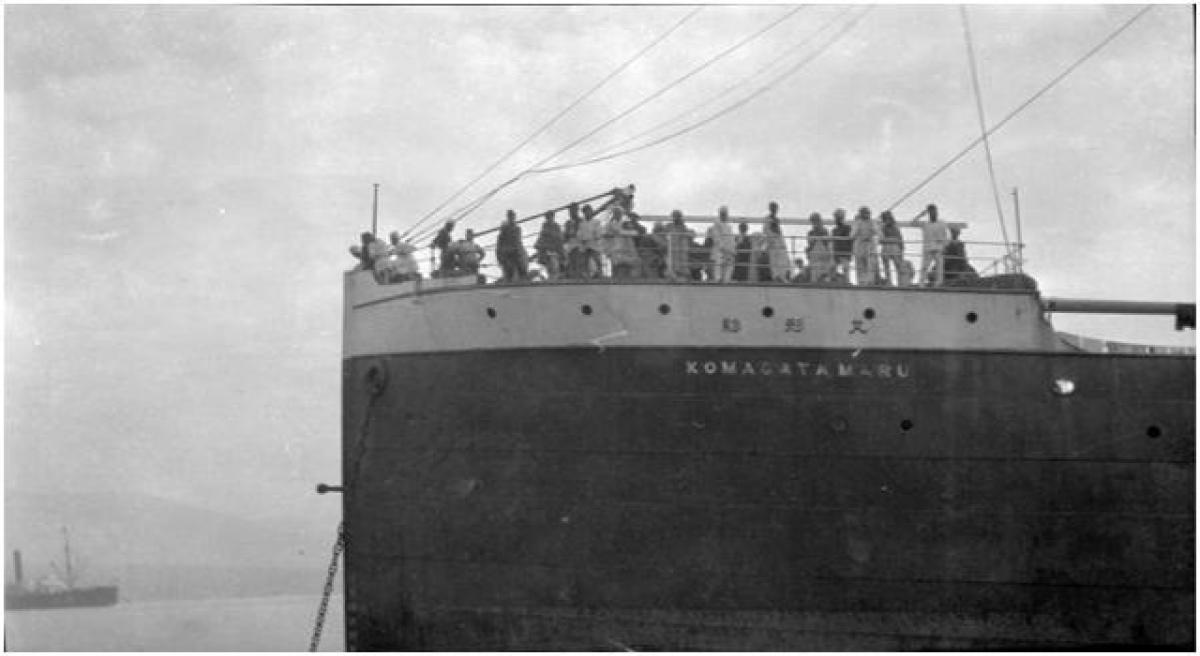Live
- Youth Commits Suicide in Srikalahasti
- MeT department advises TN fishermen to avoid deep sea fishing
- Scientists decode brain activity that can help treat anxiety and depression
- Madarihat loss sees BJP’s tally in Bengal Assembly down to 66
- Sambhal mosque survey: Mob pelts stones at cops, several arrested
- US chipmaker AMD poised to step up investment in India
- Market Outlook: Q2 GDP, FIIs data and global cues key triggers for next week
- Internationalisation of UPI progressing rapidly: RBI
- NHRC Team Visits Sangareddy Jail to Investigate Lagacharla Incident
- Bookshelf
Just In

he SS Komagata Maru was a chartered ship featured in a dramatic challenge to Canada’s former practice of excluding immigrants from India. This challenge took place in the spring and summer of 1914, on the eve of the First World War.
The SS Komagata Maru was a chartered ship featured in a dramatic challenge to Canada’s former practice of excluding immigrants from India. This challenge took place in the spring and summer of 1914, on the eve of the First World War.
The individual who hired the KomagataMaru and who acted as chief spokesperson for the passengers was a wealthy Sikh named Gurdit Singh Sirhali who was then in his mid-50s. He had made his money as an importer and contractor in Malaya and Singapore although he had had always maintained a home in his ancestral village in Punjab.
On May 23, 1914, a crowded ship from Hong Kong carrying 376 passengers, most being immigrants from Punjab, British India, arrived in Vancouver's Burrard Inlet on the west coast of the Dominion of Canada. The passengers, all British subjects, were challenging the Continuous Passage regulation, which stated that immigrants must "come from the country of their birth, or citizenship, by a continuous journey and on through tickets purchased before leaving the country of their birth, or citizenship."
The regulation had been brought into force in 1908 in an effort to curb Indian immigration to Canada. As a result, the KomagataMaru was denied docking by the authorities and only twenty returning residents, and the ship's doctor and his family were eventually granted admission to Canada.
Following a two month stalemate, the ship was escorted out of the harbour by the Canadian military on July 23, 1914 and forced to sail back to Budge-Budge, India where nineteen of the passengers were killed by gunfire upon disembarking and many others imprisoned.
KomagataMaru sailed from Hong Kong, then a holding of the British Empire, via Shanghai, China, and Yokohama,Japan, to Vancouver, British Columbia, Canada, in 1914, carrying 376 passengers from Punjab, British India.
Of them, 24 were admitted to Canada, but the other 352 passengers were not allowed to disembark in Canada, and the ship was forced to return to India. The passengers comprised 340 Sikhs, 24 Muslims, and 12 Hindus, all British subjects. This was one of several incidents in the early 20th century in which racist exclusion laws in Canada and the United States were used to exclude immigrants of Asian origin.
In May 2008, the then Canadian Prime Minister Stephen Harper delivered an apology at a fair organized by Sikhs in a park in Surrey, British Columbia. Many of the Sikhs present were unhappy with the place chosen for this apology.
They wanted it delivered in the House of Commons in Ottawa, where comparable Canadian government apologies for past injustices against other minorities had been made (similar to Government Apology to Former Students of Indian Residential Schools).
On 18 May 2016, the current Canadian Prime Minister Justin Trudeau formally apologized for the incident before the House of Commons: “Today — while knowing that no words can fully erase the pain and suffering experienced by the passengers — I offer a sincere apology on behalf of the government for the laws in force at the time that allowed Canada to be indifferent to the plight of the passengers of the KomagataMaru.”

© 2024 Hyderabad Media House Limited/The Hans India. All rights reserved. Powered by hocalwire.com







